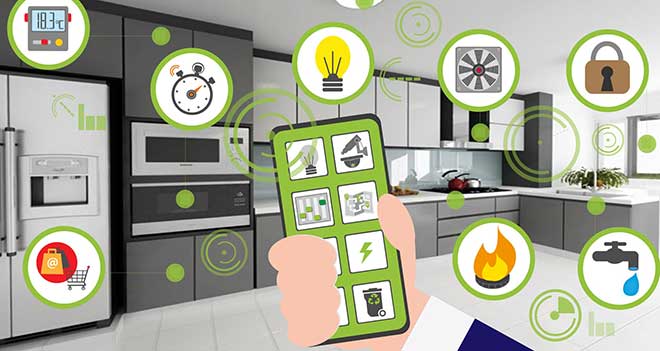What smart homes are and why everyone talks about them. A connected home, sometimes called a smart home, uses computer network technology for the convenience and security of families. Home automation enthusiasts are starting to use so-called connected appliances. Today, there are many new smart products that homeowners are interested in as these technologies continue to evolve and become easier to use.
Connected home network technologies
Modern connected home devices use wireless network protocols to communicate with each other. Traditional wireless home automation devices have been designed to work on mesh networks using special protocols such as Z-Wave and Zigbee.
Many connected homes, however, also have home Wi-Fi networks and integrate these other devices with it (a process called bridging). Apps for mobile phones/tablets are commonly used to remotely control home gadgets connected through the home network. The new intelligent assistants act as hubs and allow you to control more products from your PC.
Learn more about the topic- How to turn your home into a smart home
Functions of connected houses
Through electronic sensors, connected homes are able to monitor environmental conditions including lighting, temperature, and movement. The control functions of the connected houses include the manipulation of switches and solenoid valves.
Lighting and temperature control
The simplest application of traditional home automation is lighting control. The intelligent dimmer switches (not to be confused with the network switches) allow you to adjust or remotely increase the brightness of the electric bulbs and to switch them off or on, upon request or via a preset timer. There are both internal and external light control systems. They offer home owners a combination of physical comfort, safety, and potential energy-saving advantages.
SEE- How to know who is connected to your WiFi and block it
Smart thermostats control domestic heating, ventilation, and air conditioning (HVAC) systems. These devices can be programmed to change home temperatures at different times of the day during the night to help save energy and maximize comfort.
Connected home security
Different types of household-related products have home security applications. Smart locks and garage door remote controls can be remotely controlled and can even send alert messages via cloud ports when doors are opened.
Some controllers can support remote unlocking or re-locking, useful in situations such as when children arrive home from school. Intelligent alarms that detect smoke or carbon monoxide can also be configured to send remote alerts. Video surveillance systems can include internal and/or external digital cameras that stream video to home servers and remote clients.
DONT MISS- All you need to know about Smart Home devices
Other applications of connected houses
Internet refrigerators incorporate wireless sensors (often RFID) that track the amount of products inside. These smart refrigerators use integrated Wi-Fi for data communication.
Wi-Fi scales measure a person’s weight and send them to the cloud via a Wi-Fi home network.
The intelligent irrigation system measures the times of lawns and plants. Vacation home owners, for example, can remotely change the irrigation program of a smart sprinkler to adapt to changing weather forecasts. Home weather stations let you connect your home to what the weather may be like tomorrow.
Motion sensors integrated with connected devices can also be used to add intelligence to home environments, such as activating a ceiling fan for switching on when someone enters a room or turning off lights as soon as someone exits from the room. Voice sensors and/or face detection technologies can recognize people and stream music based on preset individual preferences.
If you want to learn more, read here- How to control your lights with Amazon Alexa
Problems with connected homes
Home automation and connected home technology have historically involved many different wireless and network communication standards. Consumers sometimes fail to combine products from different suppliers and all of their features work properly together. It can also require a considerable extra effort to learn the technical details necessary for each type to configure and integrate them into the home network.
In some parts of the world, utilities have replaced old household meters with smart meters. A smart meter periodically detects the electricity and/or water consumption of a family and transmits the data to the offices of the service company. Some consumers have opposed this detailed level of monitoring their energy consumption habits and believe it invades their privacy.
The cost of creating a connected home can increase enough because a different mix of gadgets is required to support all its various features. Families may find it difficult to justify the cost of those who might consider luxuries. Although families can manage their budget by gradually increasing the gadgets in their connected home.

